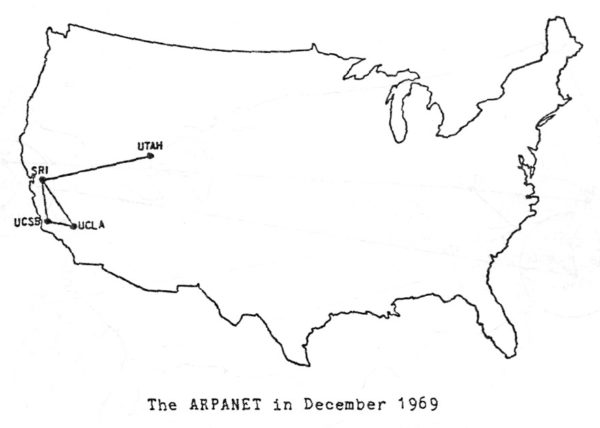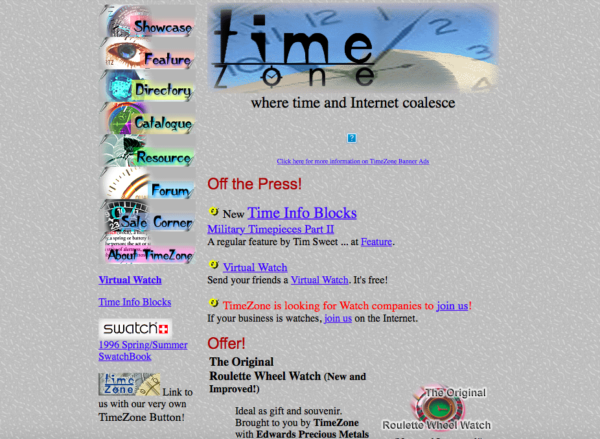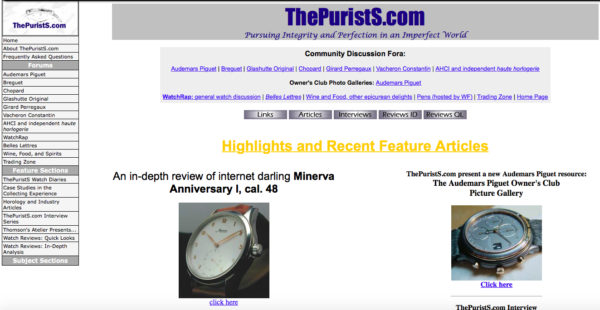In hindsight, it’s almost impossible to say for certain when the internet actually began to exist, but for Leonard Kleinrock, an American computer scientist and professor at UCLA’s Henry Samueli School of Engineering and Applied Science, it was Oct. 29, 1969 (in other words, shortly after the first watches with automatic chronograph movements had made it to the market). On this day, Kleinrock oversaw how “the infant internet uttered its first words,” when a computer at UCLA made contact with a second computer, several hundred miles away at the Stanford Research Institute, and then UCLA undergraduate Charles S. Kline started to tap out the message “Login” (the system crashed after the first two letters, but eventually, the online equivalent of the moon landing was accomplished in its second attempt). By the end of 1969, two more computers were connected to form the initial ARPANET, which then evolved into the internet. Fast forward to June 1995, shortly before eBay’s predecessor AuctionWeb was launched (and Bond started wearing the Seamaster), there were already 23,500 websites and over 44 million users online. Today there are more than 1.3 billion websites and close to 4 billion people with online access, according to internetworldstats.com – and half of them can be found on Facebook, according to Statista.com.

But most importantly, in these past 49 years, the internet has fundamentally changed the way we work, communicate, learn, date, order goods and consume media. It seems to have not just become “the town square for the global village of tomorrow” as once envisioned by Bill Gates, but more likely the village in which we spend a significant amount of time. For the watch industry, the internet has brought nothing less than a second digital revolution. Thanks to unrivaled levels of transparency, networks, and access to more watches than ever before, the industry’s very traditional business model has been disrupted in many ways, and quite a few watch brands seem slow to respond, especially when it comes to new distribution channels and business opportunities like online retail and the pre-owned market.
For watch collectors, who were often restricted to local classified ads, auction houses or vintage watch shops, going online has also provided access to a global community and to a much simpler global exchange of pre-owned watches. For example, the earliest archived version of one of the first online watch discussion forums, Timezone, from Dec. 23, 1996, already included a “Sale Corner.” Watchuseek’s oldest archived site from May 25, 2000, had a “Buy, Sell & Trading Board,” and ThePurists’s first archived version from Jan. 6, 2002, had a “Trading Zone.”

The Online Marketplace
Vintage watch dealers were quick to launch their own websites, too, and with AuctionWeb’s rebranding in 1997 as eBay, one of the world’s best-known online marketplaces was born, accessible to pretty much everyone equipped with a modem, a computer and a desire for a much more efficient and controlled checkout system than any HTML website could provide back then. Amazon, with a slightly different approach for vendors and a stronger focus on unworn watches, had already launched in 1995, Alibaba came in 1999 (and became the first Asian company to break the U.S. $400 billion value mark in 2017). These platforms all managed to bring together vendors and buyers on a much larger scale. In addition, a centralized marketplace like eBay also meant that the fluid frontiers between secondary market, parallel market, and gray market became more apparent than ever, and the importance of trust between seller and buyer soon turned into one of the most relevant factors and currencies when conducting business online, especially in regard to potentially stolen watches, fakes or watches without papers. For example, eBay’s introduction of seller feedback in 1997 was seen as a right step toward creating what the company describes as “a virtual community of openness and confidence.”

Newsgroups and watch discussion forums continue to play an important role in providing background information on available watches (as much as possible) and on sellers, and also in getting more people used to the idea of buying a) a watch online that b) did not necessarily come from an official retailer and, in some cases, c) may have already had previous owners.
Similar to buying a pre-owned car directly from the owner, opting for a pre-owned watch did become an accepted way to save money and build up a collection faster, and the increasing number of heavily advertised watch auctions also confirmed that there seemed to be nothing wrong with a watch that was offering a bit more history – as long as the source was trustworthy. This is where a lot of the specialized pre-owned online sites saw potential.
This is the first part of an overview on the development of the global pre-owned watch market. Keep an eye out for part two, where we take a look at how the various pre-owned watch websites differ, next Friday.
